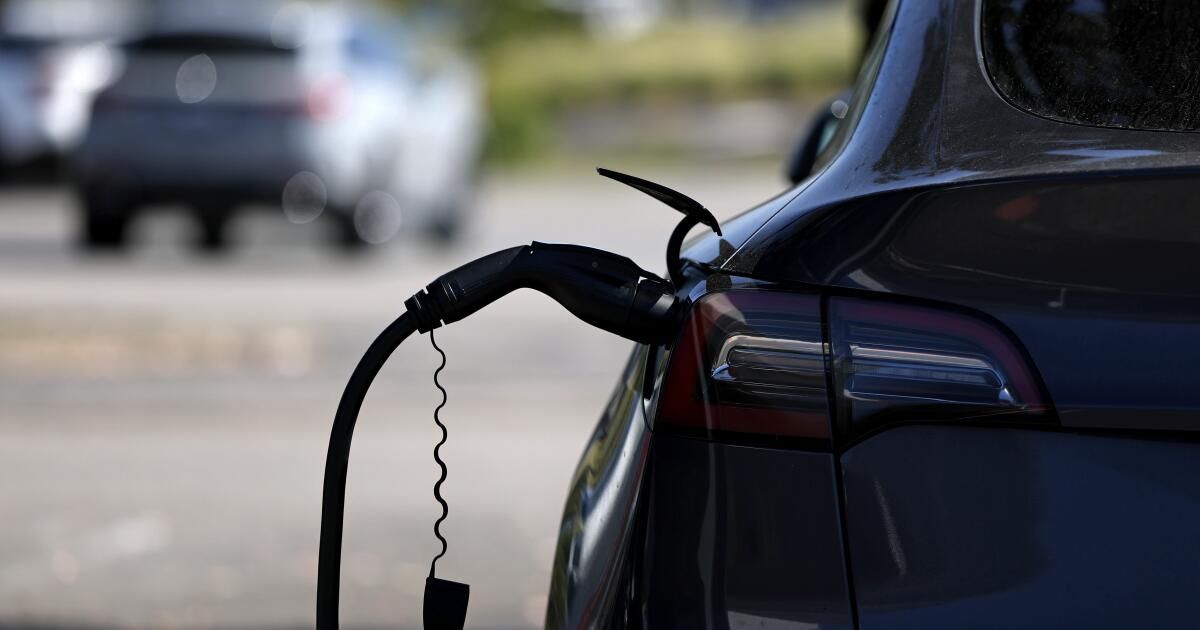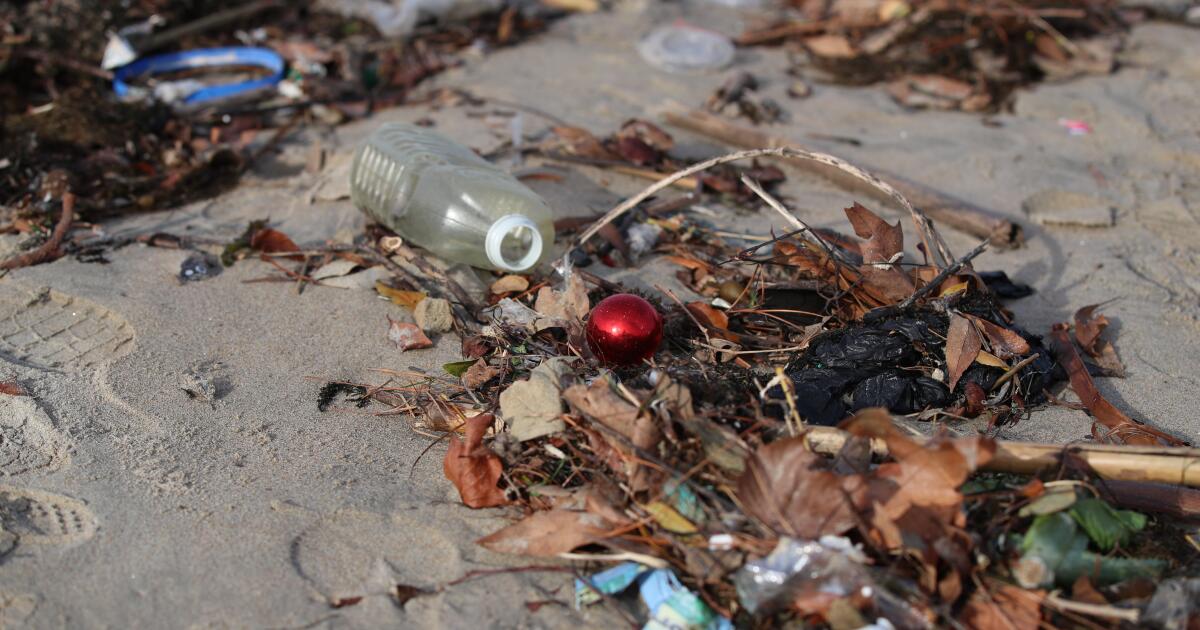With more than 1.9 million registered electric vehicles On their roads, representing more than a third of all EVs throughout the country, California leads the United States to convince drivers to change internal combustion engines. However, despite this success, the State still cannot make this important transition.
The cheapest and cleaner moment to load an EV is when the electricity grid is ras from solar energy, that is, when the sun is high in the middle of the day. This makes electric cars quite different from conventional vehicles with gasoline, whose pollution levels are not affected by when a driver is played at the corner station.
In fact, although changing vehicles with gasoline to EVs loaded during the night can reduce emissions by 80%, the daytime load can actually reduce an additional 80%emissions. But convincing the Californians to change habits and fill their batteries at noon is not easy.
Most EV owners now have loaders at home and can conveniently replenish energy stores from their vehicles during the night. With our current energy mixture, that means that these cars are largely fed by the natural gas that feeds the network when the sun does not shine.
In UC San Diego, I am part of the team that performs the world's largest scientific experiments About human behavior when it comes to charging EVs in the workplace, knowing drivers where many are parked at noon.
UCSD has created a great opportunity to study this emerging field through the construction of a massive load network: 550 ports today, with plans for 1,200 in total at the beginning of 2026. These ports extend in 42 parking lots, located on the campus and in satellite locations, such as hospitals and coastal laboratories. Although the typical LOT houses around 10 EV ports, some parking structures have space for more than 100. All of these are “level 2” stations, usually three to five times more powerful than a regular output charger and capable of replacing more than half of the battery of a typical EV during a work day load session of at least four hours.
We have taken advantage of this living laboratory to prove how information shapes habits. It turns out that describing the benefits of daytime load can effectively change driver's behaviors, although slightly.
The greatest changes in behaviors will require stronger incentives and more opportunities to fill out the batteries outside the home. The best incentive could be that public services set the price of electricity depending on real costs to provide it. Today, retail prices for electricity vary mostly according to network infrastructure costs, which is why retail rates are cheaper during the night, when our transmission and distribution lines have a lot of unused capacity. On the contrary, wholesale prices, what your electricity provider could pay to an energy generator, already shows that the electricity used at noon generally costs less to generate and transmit to consumers.
Workplace The EV load networks were It is expected to triple for 2030According to the International Council for Clean Transportation. However, the Current setback of federal support For more EV public stations, it will mean an even greater need to add ports in the workplace.
Policy formulators should also focus more on the quality of the networks we are building, not only on the number of loaders we can install. California has begun to address this problem by establishing the reliability requirements so that EV stations qualify for subsidies, but monitoring and application have been delayed. Continuing advancing in the expansion and function of the network, together with improving price structures to reflect the benefits of noon energy use, would be very useful.
The scale of this challenge, and the opportunity it represents is vast.
Last year, California wasted sufficient solar and wind energy To supply more than half of the entire EV load needed in the state. We simply couldn't use everything at the time it was generated. Loading noon would be a great step to use that power. Using the clean and cheap energy that we are already generating is an obvious victory to reduce costs and emissions, and support policy can help us adjust our habits to get there.
Jeff Myers is an associate of research with the Initiative for deep decarbonization in UC San Diego.
Perspectives
Times Insights It offers an analysis generated by the voices content to offer all points of view. Insights does not appear in any news article.
point of view
Perspective
The following content generated by AI works perplexed. Los Angeles Times editorial staff does not create or edit the content.
Ideas expressed in the piece
- The author argues that the daytime load when the solar energy is abundant represents the optimal approach to maximize the environmental benefits of electric vehicles, which potentially reduces emissions by an additional 80% compared to the night load.[4]
- The load in the workplace arises as the ideal solution since employees are usually parked in their offices during maximum solar energy hours, creating a natural alignment between vehicle availability and clean energy generation
- Currently loading habits are environmentally subóptimos, since the majority of EV owners charge during the night when the network depends largely on natural gas sources instead of renewable sources
- The author emphasizes that public service companies should restructure electricity prices to reflect real -time generation costs, noting that wholesale prices of electricity already show that noon energy is cheaper to generate and transmit
- UC San Diego research shows that providing information on daytime load benefits can influence driver's behavior, although stronger incentives and expanded work infrastructure are necessary for significant change.
- The author highlights the massive renewable energy scale.
- The policy approach must change to improve the quality and reliability of the load network instead of simply maximizing the number of loaders installed
Different views on the subject
- State policy formulators are prioritizing current current fast charge infrastructure, with the $ 55 million fast backgrounds of the California project only DC rapid loaders instead of level 2 work loaders that the author advocates by the author[1][2]
- The emphasis remains in public access loads, such as convenience stores, service stations, retail centers and parking lots, instead of specific workplace facilities that would facilitate the daytime charge[2]
- Current infrastructure programs prioritize equity and accessibility by directing funds to tribal, disadvantaged and low -income communities, focusing on geographical distribution instead of optimal loading time[2]
- The State approach emphasizes the rapid deployment of projects ready to build with existing permits and public service connections, prioritizing the speed of the installation over the optimization of the behavior for the daytime load[1][2]
- The broader strategy of California is directed to the expansion of the mass scale with objectives of more than 1 million loaders by 2030 to support 7 million EV expected, which suggests that quantity and accessibility have priority over the optimization of synchronization[1]
- Multifamily residential load programs assign more than $ 56 million specifically for level 2 loaders in residential complexes, indicating continuous emphasis on household load solutions instead of alternatives in the workplace[3]












